|
|
|
Sort Order |
|
|
|
Items / Page
|
|
|
|
|
|
|
| Srl | Item |
| 1 |
ID:
132371
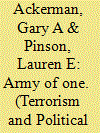

|
|
|
|
|
| Publication |
2014.
|
| Summary/Abstract |
In recent years, much of the literature on terrorist pursuits and use of unconventional weapons has focused on al-Qaeda and other Islamic extremist groups. Some scholars posit lone actors may differ from organizations when it comes to the observation that larger organizations are more likely to engage in chemical, biological, radiological, and nuclear (CBRN) activity, but leave this as an open question because of a prior lack of data on lone actors. Furthermore, new technologies and expanding networks may also spawn more deleterious lone actors, including what have been referred to as "super-empowered individuals." This article utilizes the Profiles of Incidents Involving CBRN by Non-State Actors Dataset and the Radiological and Nuclear Non-State Actors Database to illustrate the characteristics of CBRN pursuit by lone wolves and autonomous cells over time. Initial findings confirm the general perceptions that, historically, lone actors have engaged in cruder, smaller scale, and less frequent CBRN plots and attacks than their formal terrorist organization counterparts, but suggest that such actors do present a genuine threat, at least in terms of the potential for mass disruption. Additionally, while they share several similarities with more formal organizations, lone actors and autonomous cells tend to be motivated less by collective religious or ethno-nationalist concerns than larger organizations, focusing more on narrow or solipsistic drivers. Lone actors and autonomous cells also appear to largely calibrate their CBRN ambitions to their capabilities and their CBRN actions tend to receive better media coverage than formal terrorist organizations.
|
|
|
|
|
|
|
|
|
|
|
|
|
|
|
|
| 2 |
ID:
172053
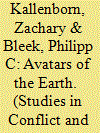

|
|
|
|
|
| Summary/Abstract |
Terrorists combining motivations and capabilities to conduct significant chemical, biological, radiological, or nuclear (CBRN) attacks are, logically and empirically, outliers. Certain characteristics of radical environmentalism heighten the risk of such outliers. The majority of even radical environmentalists embrace nonviolence. Those who turn violent mostly do so in limited ways due to a combination of motivations and capabilities. Fringe elements are motivated to commit large-scale—including CBRN—violence, but are mostly constrained by capability. Yet eco-radicalism also draws more capable adherents. If serious CBRN terrorism attacks occur—a risk about which analysts differ markedly—radical environmentalist fringe actors are plausible perpetrators.
|
|
|
|
|
|
|
|
|
|
|
|
|
|
|
|
| 3 |
ID:
080147
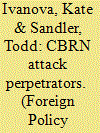

|
|
|
|
|
| Publication |
2007.
|
| Summary/Abstract |
Based on zero-inflated negative binomial regressions applied to the Monterey weapons of mass destruction data, this article assesses the future risks from chemical, biological, radiological, and nuclear (CBRN) terrorism. Once the threshold for CBRN attacks is surpassed, further attacks arise: the expected number of CBRN incidents is over one and a half times higher than past events. Religious cults and groups with a transnational orientation pose the largest CBRN threat to society. Other things constant, nationalists/separatists and religious fundamentalists are not more apt to engage in CBRN terrorism than compared to "other groups." Democratic and corrupt regimes are the likely venues for CBRN incidents. Based on past incidents, rich countries are especially vulnerable to CBRN terrorism. Thus, recent actions by the U.S. Department of Homeland Security to put more resources into guarding against CBRN attacks appear sound. This study indicates that nonfundamentalist terrorists also present CBRN risks to democracies. From a foreign policy viewpoint, CBRN terrorism is not a problem that rich democratic countries can confront alone, because the terrorists will move to where there is the least vigilance. Our study indicates the likely perpetrators and types of attacks that nations must cooperate to avoid
|
|
|
|
|
|
|
|
|
|
|
|
|
|
|
|
| 4 |
ID:
058541
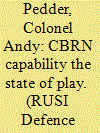

|
|
|
| 5 |
ID:
022631
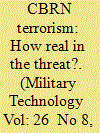

|
|
|
|
|
| Publication |
2002.
|
| Description |
8-12
|
|
|
|
|
|
|
|
|
|
|
|
|
|
|
|
| 6 |
ID:
130312
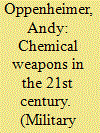

|
|
|
|
|
| Publication |
2013.
|
| Summary/Abstract |
The article focuses on chemical weapons (CW) in Syria. The August 21, 2013 mass chemical weapon bombardment in Syria is discussed. Other topics mentioned include the decommissioning of the Syrian arsenal by the United Nations' disarmament agency the Organization for the Prohibition of Chemical Weapons, the civil war in Syria, and the dismantling of Syria's capability to produce CW. Also discussed are defenses against chemical, biological, radiological and nuclear (CBRN) weapons.
|
|
|
|
|
|
|
|
|
|
|
|
|
|
|
|
| 7 |
ID:
067284
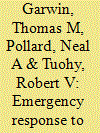

|
|
|
| 8 |
ID:
137420
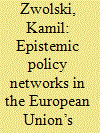

|
|
|
|
|
| Summary/Abstract |
This paper offers insights into an innovative and currently flagship approach of the European Union (EU) to the mitigation of chemical, biological, radiological, and nuclear (CBRN) risks. Building on its long-time experience in the CBRN field, the EU has incorporated methods familiar to the students of international security governance: it is establishing regional networks of experts and expertise. CBRN Centers of Excellence, as they are officially called, aim to contribute to the security and safety culture in different parts of Africa, the Middle East, South East Asia, and South East Europe, in the broadly construed CBRN area. These regional networks represent a modern form of security cooperation, which can be conceptualized as an epistemic policy networks approach. It offers flexibility to the participating states, which have different incentives to get involved. At the same, however, the paper identifies potential limitations and challenges of epistemic policy networks in this form.
|
|
|
|
|
|
|
|
|
|
|
|
|
|
|
|
| 9 |
ID:
126117


|
|
|
|
|
| Publication |
2012.
|
| Summary/Abstract |
A deliberate attack involving chemical, biological, radiological, or nuclear (CBRN) material has the potential to cause substantial fear among the public. This presents problems for communicators, who will need to provide information quickly after an attack while ensuring that their messages are easily understood and likely to be attended to by members of the public. Identifying in advance what people would want to know, where they would get information from, and how messages should be presented might allow communicators to ensure that their messages have the best chance of having their desired effect. In this review, we identified all peer-reviewed studies that have assessed communication strategies or information needs using hypothetical CBRN scenarios or in actual CBRN incidents. We identified 33 relevant studies. Their results support existing psychological models of why people engage in health protective behaviors, with information about the severity of the incident, the likelihood of being exposed, the efficacy and costs or risks of recommended behaviors, and the ability of individuals to perform recommended behaviors being sought by the public. Trust plays a crucial role in ensuring that people attend to messages. Finally, while a large variety of spokespeople and sources were identified as being turned to in the event of an incident, the use of multiple information sources was also common, affirming the importance of communicating a consistent message through multiple channels. Further research is required to extend these predominantly US-based findings to other countries and to confirm the findings of research using hypothetical scenarios.
|
|
|
|
|
|
|
|
|
|
|
|
|
|
|
|
| 10 |
ID:
191003
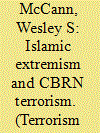

|
|
|
|
|
| Summary/Abstract |
The extant literature on the relationship between religious ideology and CBRN weapons pursuit lacks a strong empirical basis. To address this, the current study utilizes a new dataset—the CBRN Terrorism Database (CTD)—to evaluate whether Islamic actors are more or less likely to pursue CBRN weapons. Binary logistic regression models are used on several different constrained subsamples to assess the relationship between ideology, group-, and country-level factors and CBRN weapons pursuit. Across the models, the strongest predictors of pursuit are whether the actor is an individual, is inspired by an Islamic ideology, and resides in a country with low levels of ethnic fractionalization. Other factors are important under specific contexts, but Islamic groups are significantly more likely to pursue CBRN weapons as well. Implications and recommendations are discussed.
|
|
|
|
|
|
|
|
|
|
|
|
|
|
|
|
| 11 |
ID:
179983


|
|
|
|
|
| Summary/Abstract |
The majority of scholarship on chemical, biological, radiological, and nuclear (CBRN) terrorism relies on non-empirical theorizing or the in-depth examination of a handful of prominent cases. A key reason for the dearth of systematic analyses is the lack of a comprehensive database on CBRN terrorism events amenable to quantitative analysis. This article introduces the Profiles of Incidents involving CBRN and Non-State Actors (POICN) database, consisting of 517 CBRN terrorism–related events from 1990 to 2017. After laying out the general scope of the database and its unique approach to incident validation, the article illustrates POICN’s potential through preliminary observations of the data.
|
|
|
|
|
|
|
|
|
|
|
|
|
|
|
|
| 12 |
ID:
100457
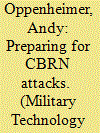

|
|
|
| 13 |
ID:
056262


|
|
|
| 14 |
ID:
097111
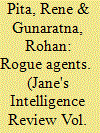

|
|
|
| 15 |
ID:
057391


|
|
|
|
|
|
|
|